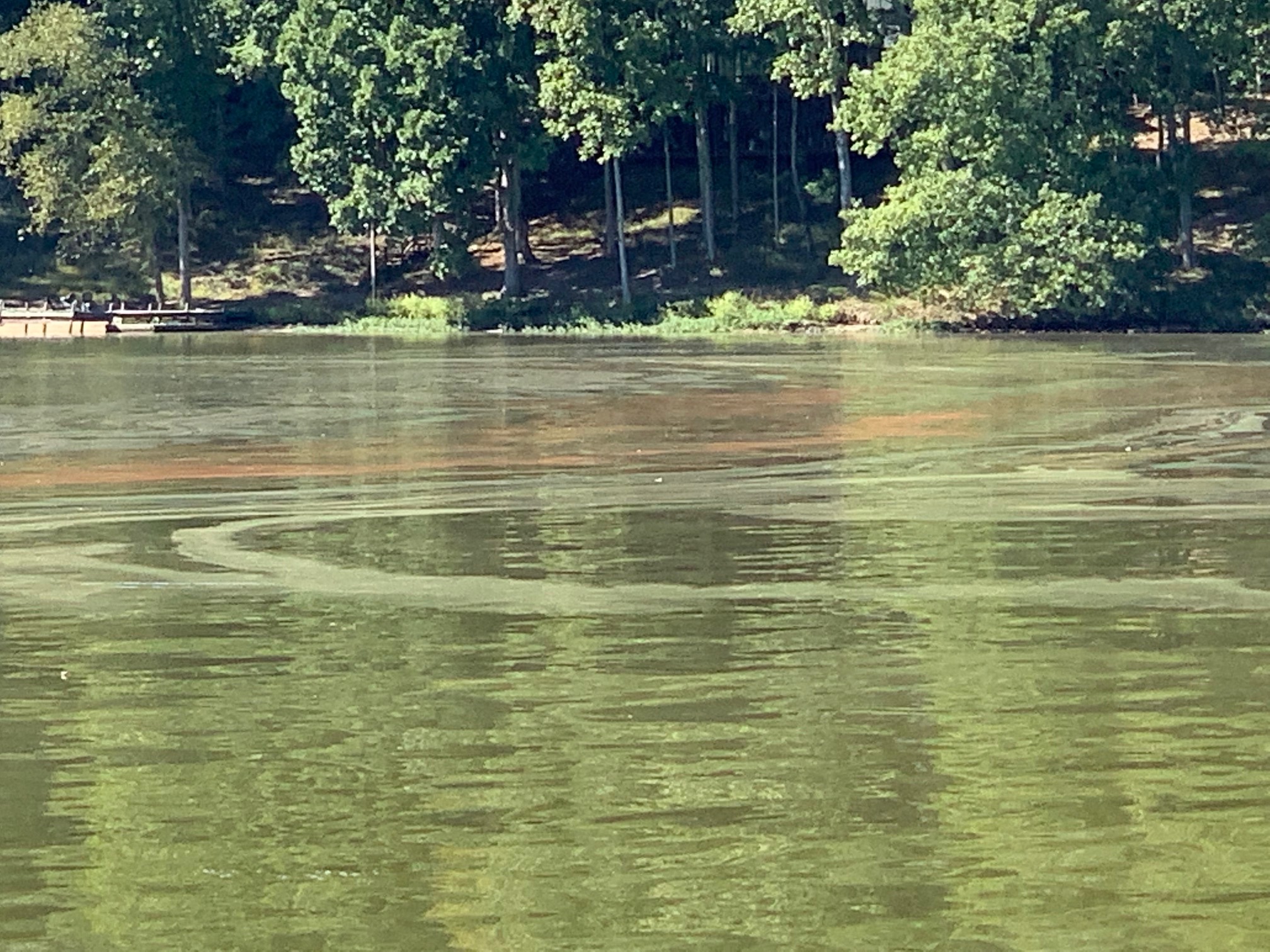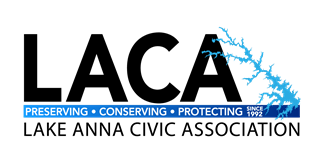By Ron Skinner – November 2021
LACA is requesting its members and fellow citizens to send letters to their elected representatives at County, State and US governments. The purpose of this letter writing campaign is to i) inform officials about the Harmful Algae Bloom (HAB) issues at Lake Anna, and ii) request funding and resources be directed to addressing appropriate action to investigate, mitigate, remediate, and prevent HAB problems.
Lake Anna is experiencing the growth of blue-green algae (Cyanobacteria) that has multiplied into Harmful Algae Blooms each summer for the past four years (2018 – 2021). HABs create health risks and can release potentially hazardous amounts of toxins into the lake water.  As a result, the Virginia Department of Health (VDH), Virginia Department of Environmental Quality (DEQ), and Lake Anna Civic Association (LACA) have been cooperatively monitoring designated sites on the lake for the presence of blue-green algae and their toxins.
As a result, the Virginia Department of Health (VDH), Virginia Department of Environmental Quality (DEQ), and Lake Anna Civic Association (LACA) have been cooperatively monitoring designated sites on the lake for the presence of blue-green algae and their toxins.
VDH has issued “no-swim” health advisories for several parts of the upper lake during each of those four years, including Lake Anna State Park in 2018 and 2019, when harmful algae blooms have been detected above “safe” levels, in accordance with Virginia HAB Task Force protocol developed from Federal CDC and EPA guidelines.
Naturally, there is increased concern about the safety of the water for recreation by residents and visitors, plus the economic impact on local businesses that count on popularity of the lake for their livelihood, and among the several State agencies concerned with water quality and health. These agencies include VDH, DEQ, Virginia Department of Conservation & Recreation (DCR), and the three Soil & Water Conservation Districts (SWCDs) that cover the Lake Anna Watershed.
LACA’s Water Quality and Environmental Preservation Committees have conducted water quality monitoring activities, researched harmful algae bloom factors and management techniques, and collaborated with various state agencies and university researchers engaged with HAB issues.
Why? To first gain knowledge, benefit of experiences, and better understanding of the range of probable causes of harmful algal blooms here at Lake Anna. And then to identify (a) prospective treatments, mitigation practices and behavior modifications which could be employed to mitigate and remediate current problems in the short term, and (b) environmental initiatives and capital-intensive projects which may be undertaken to prevent future harmful algae bloom problems over the long term.
The answers we have uncovered all revolve around the same theme:
Nutrients entering the lake water must be reduced.
Primarily phosphorus and nitrogen, nutrients flow in by feeder streams back up in the watershed, storm water runoff and soil erosion near the river banks and shoreline (external sources), or lake bottom sediment that has built up over time (internal sources). The excess nutrients available in the water are fueling growth of blue-green algae. This must be controlled to mitigate, remediate, and prevent the unhealthy blooms of harmful toxin-producing Cyanobacteria. Simply stated in four fundamental steps:
- Follow the bad algae
- Backtrack the nutrients
- Stop nutrients at their sources
- Remediate the residuals
Unfortunately, our various State agencies concerned with water quality and health lack the budget funding and staff resources to do any more than their past efforts. In fact, there is no budget funding dedicated to HAB work in the freshwater lakes and streams in Virginia. Typically, funding for water quality and environmental programs derives from legislation and budgets at the Federal and State level governments. Allocation and implementation follow at the State and County level governments.
Dramatically increased funding and resources are required with dedicated allocation to freshwater HAB study and response.
So it is important for concerned citizens to contact all their elected representatives asking for funding and resources be directed to addressing appropriate action on HAB issues at Lake Anna. This applies regardless of where in Virginia (or other states) you may have permanent residence and vote. Indeed, the more widespread participation across the region you can help to create will make the HAB letter campaign more effective.
Contact information for elected representatives in the Lake Anna region is listed on the LACA website, under “About the Lake” then “Elected Representatives”. Or click here.
Statewide elected officials in other parts of Virginia can be found at: whosmy.virginiageneralassembly.gov
Please write to your elected officials today!
ron.skinner@lakeannavirginia.org
A sample letter follows:
[Date]
Dear [Elected Representative],
I am writing to express my concern about Harmful Algae Bloom (HAB) issues at Lake Anna in Central Virginia, and to request that funding and resources be directed to addressing appropriate action to investigate, mitigate, and prevent HAB problems.
Lake Anna is experiencing the growth of blue-green algae (Cyanobacteria) that has multiplied into Harmful Algae Blooms each summer for the past four years (2018 – 2021). HABs create health risks and can release potentially hazardous amounts of toxins into the lake water. As a result, the Virginia Department of Health has issued “no-swim” health advisories for several parts of the upper lake during each of those four years, including Lake Anna State Park in 2018 and 2019, when harmful algae blooms have been detected above “safe” levels, in accordance with Virginia HAB Task Force protocol developed from Federal CDC and EPA guidelines.
Excess nutrients entering the lake, primarily phosphorus and nitrogen, must be reduced to mitigate, remediate, and prevent the unhealthy blooms of harmful toxin-producing Cyanobacteria.
Unfortunately, our various State agencies concerned with water quality and health lack the budget funding and staff resources to do any more than their past efforts. In fact, there is no budget funding dedicated to HAB work in the freshwater lakes and streams in Virginia.
Dramatically increased funding and resources are required via legislation and budgets at the Federal and State level governments, with dedicated allocation to freshwater HAB study and response.
Please sponsor and support legislation and budget allocations to address freshwater HABs in Virginia.
Thank you,
[Your Name]
[Your Street Address]
[Your City, State, Zip Code]
[Optional: Your Email and/or Phone Contact]
